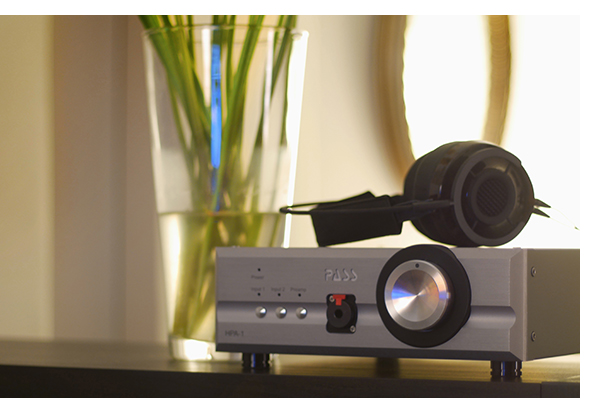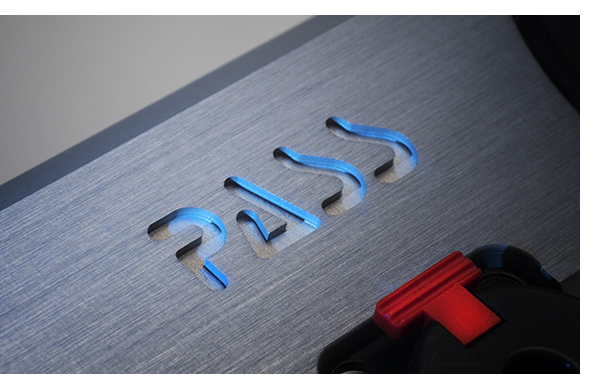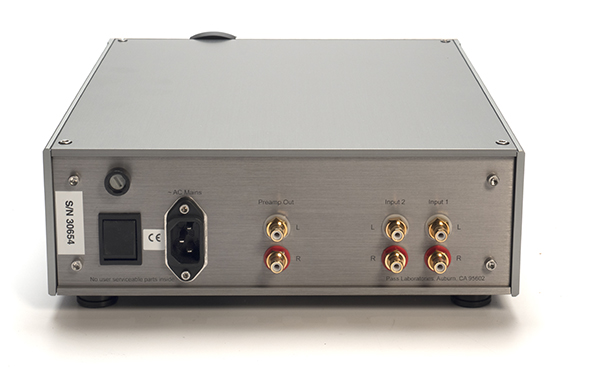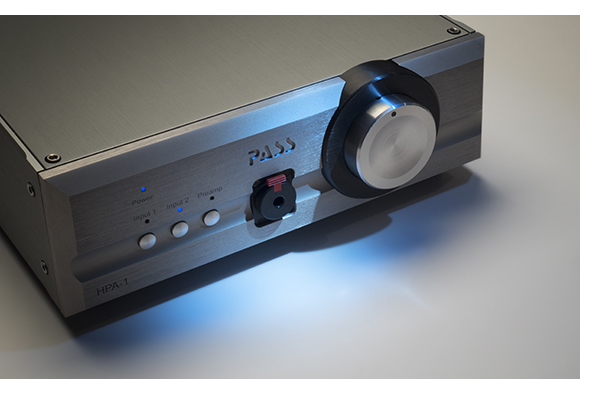 All things must eventually come to an end, but this time the breakup is not sweet sorrow. Living with the Pass Labs XA160.5 Class-A monoblocks has been a wonderful experience, and the heat that these massive monoblocks let off is a small drawback compared to the glorious sound they produce. In a year and a half of flawless performance, driving every kind of loudspeaker imaginable, I didn’t jot down a single complaint in my mental logbook. The XA160.5s even proved more engaging than a number of vacuum-tube power amplifiers parked here for various reviews and personal auditions, supporting Nelson Pass’ claim that listening to his amplifiers are like “listening to tubes, but without the hassle.”
All things must eventually come to an end, but this time the breakup is not sweet sorrow. Living with the Pass Labs XA160.5 Class-A monoblocks has been a wonderful experience, and the heat that these massive monoblocks let off is a small drawback compared to the glorious sound they produce. In a year and a half of flawless performance, driving every kind of loudspeaker imaginable, I didn’t jot down a single complaint in my mental logbook. The XA160.5s even proved more engaging than a number of vacuum-tube power amplifiers parked here for various reviews and personal auditions, supporting Nelson Pass’ claim that listening to his amplifiers are like “listening to tubes, but without the hassle.”
But then the XA200.5 monoblocks arrived. “More devices and more power equals more control,” says Pass Labs’ Desmond Harrington when asked about the difference between the XA160.5, the XA200.5 and the soon-to-arrive XS amplifiers. If there was ever a case of specs not telling the whole story, this is it. You might think there would be barely any difference between these two amplifiers—one delivering 160 watts per channel and the other delivering 200 per channel—but fire up the drum solo in Zeppelin’s “Moby Dick,” and the XA200.5 paints an entirely different picture. “Stairway” is pretty damn good, too.
Hey, Ho, Let’s Go
Tony Levin’s bass playing on the Black Light Syndrome album, from Levin, Steve Stevens and Terry Bozzio, illustrates this perfectly. This album offers some of the heaviest prog rock available; a dense, driving orchestral soup in which these three virtuosos repeatedly lay down notes like they’re firing automatic weapons. Levin is solidly anchored, while his bandmates careen off to the far edges of the soundstage from start to finish. Keeping all three musicians straight without blur is a tough task, but the XA200.5s handle it effortlessly, even at high levels.
The low, grumbling undercurrent of Burial’s “In McDonalds” takes on a more visceral feel through these amps, helping the listener truly feel the track’s deep bass and low-level texture in a way few amplifiers can muster. The overblown bass in Cash Money and Marvelous’ “Ugly People Be Quiet” loses none of its rawness and boom, while rumbling the woofers in the GamuT S9 speakers as if a subwoofer has been added to the system. Many audiophile amplifiers suffer from too much control and damping in such instances, taking the soul of the music with it, but the XA200.5s are true to the music, no matter what the genre. Even a lousy-sounding record like Teenage Fanclub’s Bandwagonesque is better sorted through these amps—this thick, compressed recording actually gives up some dynamics, with a little help from the dCS Vivaldi source.
With two pairs of world-class reference speakers at my disposal (the GamuT S9 and the Sonus faber Aida), these amplifiers play to a painfully loud level without distortion. Whether using the S9 (89 dB sensitivity) or the Aida (92 dB), the XA160.5s can be driven to a point of compression; the XA200.5s have no limit in my system. But man cannot live by bass alone—transient prowess is another area at which the XA200.5s excel. Romping through the title track from Carsten Dahl’s Bebopish Rubbish Rabbit, these amplifiers provide not only control, but also acceleration. They equally render drum transients and brushwork with the proper scale and finesse.
On one level, a component can really only be evaluated in the context of a system, and it’s tough to attach a sound to said component without seeing how it reacts to the known performance of a number of other preamplifiers and speakers. Having lived with a variety of Pass amplifiers for a few years now, I would characterize their overall sound as ever so slightly on the warm and harmonically rich side of the scale.
The XA200.5, like all of the other XA-series amplifiers I’ve auditioned, paints a big, spacious, three-dimensional soundstage—again, much like your favorite tube amplifiers do, but with considerably more dynamics, grip and control. On the title track from Leni Stern’s album Smoke, No Fire, the XA200.5s capture her delicate guitar playing with every bit of the gradation she presents in a live show, while layer upon layer of overdubbed vocals hang in mid air, meticulously spaced between each other. Too often, mediocre solid-state amplifiers fail musically when presented with these kinds of recordings, because their inability to resolve spatial information results in an overly flat and sterile picture. Modestly powered tube amplifiers excel at this kind of thing, but are unable to produce the giant dynamic swings required to capture a large orchestra or driving rock band. The XA200.5s excel here, providing the best of both worlds. Thanks to their massive power supplies and big banks of output transistors, these amplifiers retain inner detail while simultaneously carrying a heavy bass line or the roll of a kettledrum.
 A is A
A is A
The Pass Labs website simply states in the FAQ section that the reason the company produces Class-A amplifiers is “because they sound better.” I love this firmness of conviction. I must also admit to a bias towards high-powered Class-A solid-state power amplifiers in the same way someone might prefer tubes, SET amplifiers or a pair of Quad 57s. At the end of the day, we all have a preference, and I won’t apologize for this one. Pass’ large Class-AB amplifiers, as well as a few other massive AB amplifiers I’ve experienced (like the Simaudio 880Ms also reviewed in this issue), still have slightly faster acceleration and ultimate dynamic swing, but this always comes at the expense of that last bit of inner sweetness. That being said, one person will always prefer the slightly softer ride of a standard Mercedes to the AMG version with sport suspension.
Pass Labs’ relatively recent .5 series of Class-A amplifiers come as close to offering it all as anything I’ve experienced. While I still treasure my Pass Labs Aleph 3 (from the ’90s) and Threshold 400A (one of Nelson Pass’ first Class-A designs from the late ’70s—also a big favorite), comparing them to the XA200.5s clearly illustrates where Mr. Pass has built on his initial strengths, constantly refining the sonic delivery of today’s models.
Romping through a plethora of recorded male and female vocalists underscores these amplifiers’ combination of power, delicacy and tonal accuracy. Anne Bisson’s gentle vocal stylings on the title track of her recent Blue Mind album are reproduced perfectly though the XA200.5s, as are the piano and soft drum work that accompany her. If not for the enormous heat sinks on the side of each amplifier, you’d swear that the grain-free tonal texture that the XA200.5s provide is due to some vacuum tubes inside the box. And that’s the entertaining paradox: These amplifiers have too much sheer grunt to be tubed. Like Nelson Pass said…
Setup and Synergy
During our time with these amps, we had the opportunity to power about 30 different sets of speakers, from a pair of freshly refurbished MartinLogan Aerius i speakers to Sonus faber’s flagship Aidas. Nothing poses a challenge to these amplifiers or affects their performance.
The amp’s balanced XLR and single-ended inputs have an impedance of 30k ohms, which makes them easily mated to the preamplifiers at our disposal from Audio Research, Burmester, Conrad-Johnson, Robert Koda and Simaudio. Cardas Clear cabling was used for the bulk of our listening tests, yet both speaker cables and power cords affect the XA200.5 less than many other high-powered amplifiers in recent memory.
One thing the XA200.5s benefit from, if you have the luxury, is dedicated power. Drawing 700 watts each all the time, they will work connected to a standard 15-amp circuit, but will work better with a 20-amp line and better still with a pair of dedicated 20-amp circuits—one for each amplifier, if you really like to twist the volume control. I’d suggest having your electrician install a pair of 20-amp outlets for your XA200.5s before you drop a few thousand dollars on exotic power cords.
Fortunately, these 159-pound monsters have conveniently placed handles on the rear panel, though (unless you’re incredibly buff) you will still need a friend to help you unpack these amplifiers. Once you’ve installed the amps, be sure they have plenty of ventilation, because they do get warm.
 The Big, Big Money
The Big, Big Money
This extra power and control doesn’t exactly come cheap. The XA200.5s have an MSRP of $34,100 per pair, compared to $24,000 per pair for the XA160.5s. It’s always easy for me to spend your money, but if you can find a way to come up with the extra $10,000, you will not be disappointed—this is truly a case where absolute power corrupts absolutely. The XA160.5s are no slouch by any means, and tonally identical to the XA200.5; yet, even at modest volume levels, the effortlessness provided by the bigger, beefier output stage and larger power supply is instantly evident.
If you are looking for a pair of monstrous Class-A amplifiers that take no prisoners, consider the Pass XA200.5 monoblocks, or stick around for a few more issues—the XS two-box monoblocks have just arrived for review!
Pass Labs XA200.5 Monoblocks
MSRP: $34,100 per pair
www.passlabs.com
Peripherals
| Analog source |
AVID Acutus Reference SP turntable TriPlanar tonearm Lyra Atlas cartridge AMG V12 turntable AMG tonearm Clearaudio Goldfinger cartridge |
| Digital source |
dCS Vivaldi Meridian Sooloos Control 15 Aurender S10 |
| Phonostage |
ARC Reference Phono 2 SE Indigo Qualia |
| Speakers |
GamuT S9 Sonus faber Aida Sonus faber Elipsa SE |
| Cable |
Cardas Clear |
| Power |
IsoTek |
| Accessories |
Furutech DeMag and DeStat Audio Desk Systeme RCM GIK room treatments |





















